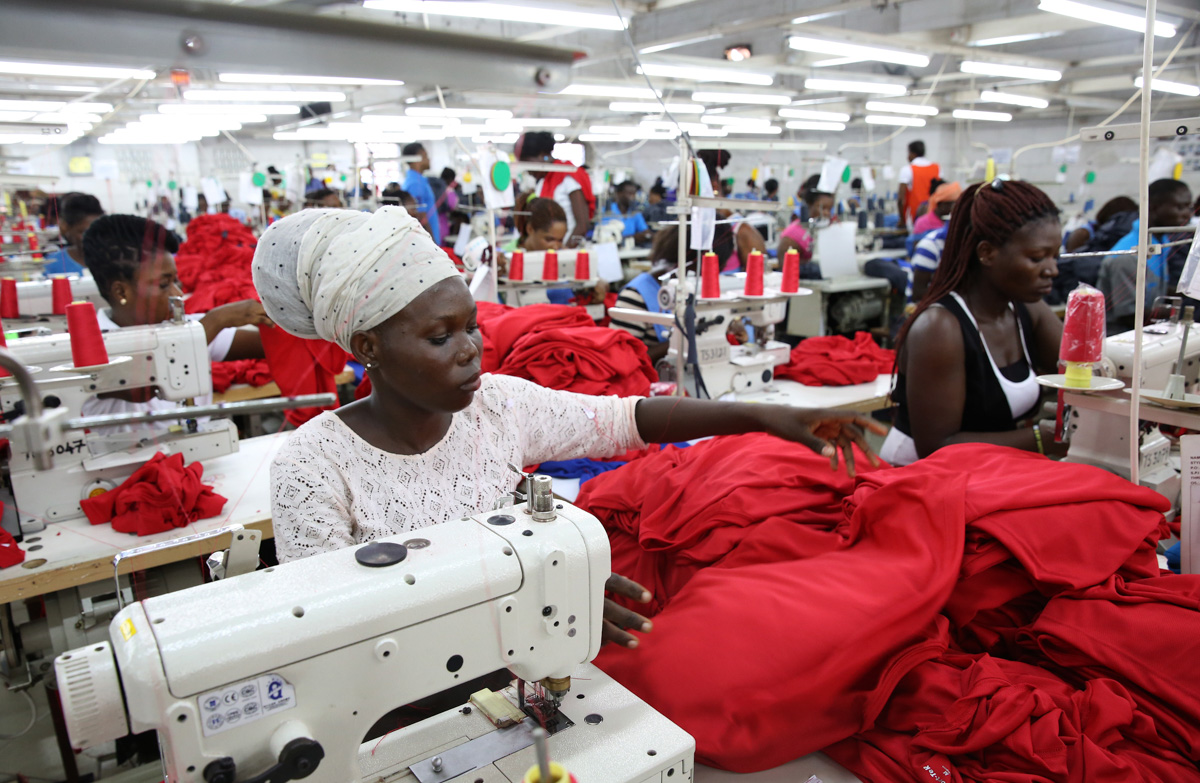Recommended
Debates on Sub-Saharan Africa’s development path and prospects often focus on two questions. Looking back, why have countries not experienced the structural transformation towards labor-intensive manufactures that has played such an important a role in the rapid development of Asian countries? And, looking forward, can poor countries still jump onto the escalator of manufactured exports development?
A recent paper by Xinshen Diao, Mia Ellis, Margaret McMillan and Dani Rodrik (henceforth Diao et al.) titled “Africa’s Manufacturing Puzzle: Evidence from Tanzanian and Ethiopian Firms” offers important new evidence on these questions. Its authors argue that African industry is increasingly dualistic: The larger firms may exhibit superior productivity performance but do not expand employment much. The smaller firms absorb labor but do not experience productivity growth. The poor employment performance of large firms is due to the use of capital-intensive techniques associated with global trends in technology. Moreover, technology choice has been largely responsible for Africa’s failure to grow labor-intensive manufacturing.
We agree with Diao et al. on the broad outlines of what has been happening within African manufacturing. In our paper “Development as Diffusion,” we stressed economic and productive dualism and the failure of high productivity enclaves to “take over manufacturing.” We also agree on the importance of their findings on the capital intensity of newer firms relative to older ones. The former are much more capital intensive than the latter; this, as well as global evidence on the erosion of manufacturing employment, offers vital confirmation of the slowing down of the labor-intensive manufacturing escalator. As they argue, poor countries face a double whammy: labor-saving innovation drives down the price of labor-intensive manufactures and at the same time reduces the comparative advantage of labor-abundant countries. Clearly it was easier to break into the sector years ago, so that countries can no longer bank on cheap industrial labor as a powerful force for rapid growth.
Where we still find a puzzle is the reasons for Africa’s failure to get a foothold onto the (admittedly slowing) escalator. Diao et al.’s reasons for this are in contrast to our recent paper, which places considerable emphasis on the cost of industrial labor. We found that almost all comparator countries had a ratio of labor cost (from enterprise surveys) to GDP that was lower than one but that nearly all African countries were well above this threshold. For example, annual labor cost per worker in Bangladesh was US$835, almost identical to its GDP per capita. For the African countries included in our study, labor cost per worker was often more than twice the level of GDP per capita. Only Ethiopia’s labor cost (at $909) appeared to be cost-competitive with labor in low-income comparators. Diao et al. reject the high wage cost explanation by noting that unit labor costs (ULCs, the ratio of labor cost to value added) are low in Sub-Saharan Africa. This may be a valid point—although we note that a sector may show similar unit labor cost ratios even under very different wage levels depending on the degree of long-run substitutability in the production function. We did not find especially low ULCs in Africa compared to other regions and not especially high ones either. We did find lower ULCs in more capital-intensive firms which is consistent with a technology choice-driven pattern, but this pattern was no different when compared with the rest of the world. We also saw a pattern by size, with higher ULCs in smaller firms. While there is a general pattern of higher capital intensity typically associated with higher wage rates and smaller ULCs, one could conclude that there is nothing especially remarkable about Africa when it comes to ULCs.
We did not argue that wage levels were an exogenous force propelling firms towards more capital-intensive production, except perhaps in South Africa where the pressure is pretty clear. However, we did argue that the high formal wage levels relative to low-income comparators may be the reason for a lack of takeoff in manufacturing. We left open the question of the forcing function for higher labor costs; in other words, we do not fully understand the reasons behind our findings. One possibility could be the scarcity of industrial skills; another the political economy of large productive firms (frequently owned by expatriates or minorities) in small markets.
Low productivity in African agriculture has also led to a historical pattern of high food costs (relative to levels of purchasing-power-parity expenditures) although Diao et al. offer some interesting recent data on Ethiopia and Tanzania. Returning to the technology explanation emphasized in Diao et al., it seems to us that, while technology may be a global force that is reshaping industry in low-income countries, there is no obvious reason why its impact in increasing capital intensity and hiking wages should have been particularly marked in Africa relative to, say, a comparator like Bangladesh.
So, where next in this debate? Diao et al. seeks to temper enthusiasm for the future of the traditional low-wage manufacturing exports model. We agree with this conclusion: the escalator is slowing, although it will not stop altogether. The question is then—what are the alternative approaches to Africa’s development? Tens of millions of young people will enter the labor force in the coming decades. Perhaps there is simply no answer, and no prospect of Africa benefiting from its remarkable demographics.
Disclaimer
CGD blog posts reflect the views of the authors, drawing on prior research and experience in their areas of expertise. CGD is a nonpartisan, independent organization and does not take institutional positions.
Image credit for social media/web: UNIDO, via Flickr







